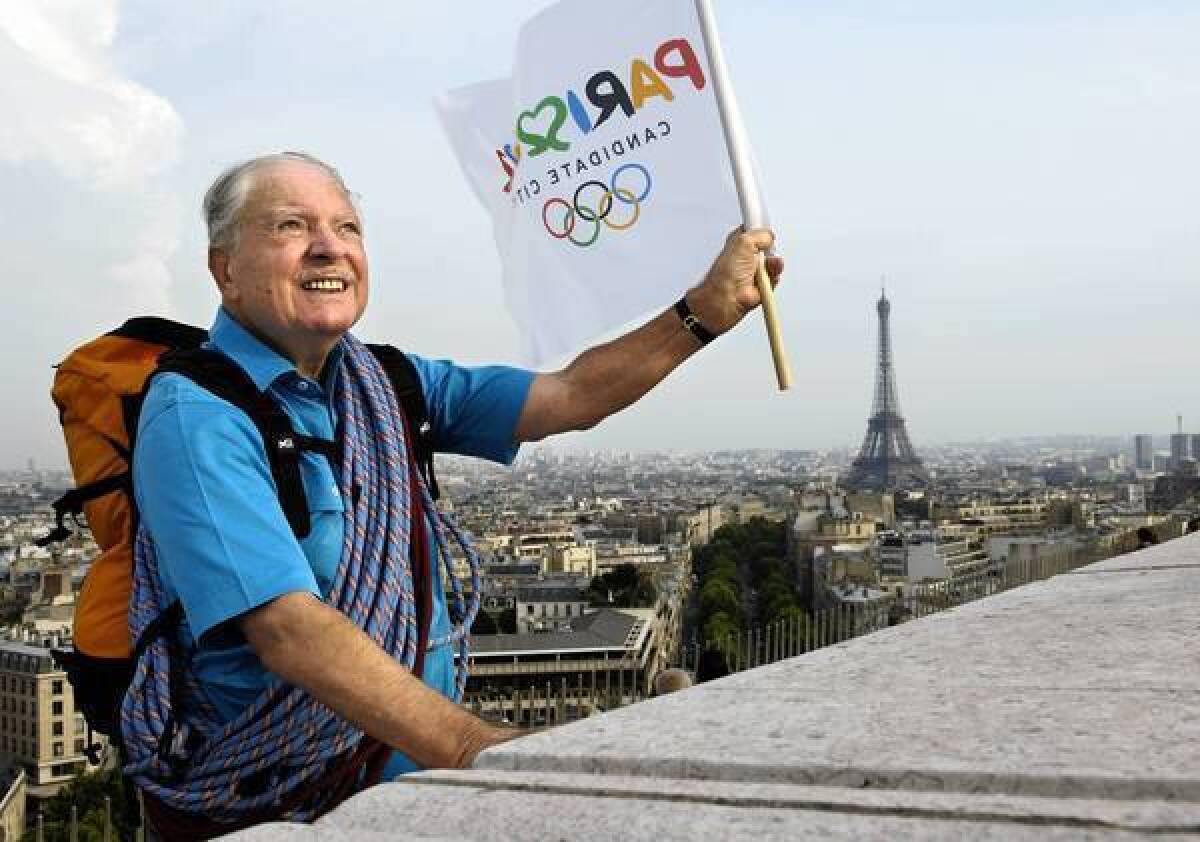Maurice Herzog dies at 93; French mountaineer

Maurice Herzog, a French mountaineer who became a hero to his country in 1950 when he and a fellow climber became the first men to successfully scale a peak of more than 26,000 feet, has died. He was 93.
Herzog, who wrote a best-selling account of his harrowing ascent of the Himalayan mountain known as Annapurna, died Friday in France of natural causes, said Pierre You, president of the French Federation of Mountaineering and Climbing. Herzog had lived near Paris.
In a tribute, French President Francois Hollande said Herzog’s historic climb was “engraved enduringly in our collective memory.” Hollande also praised Herzog’s participation in the French Resistance during World War II and his later career in public life.
A dramatic photograph of Herzog waving a French tricolor atop 26,545-foot Annapurna on June 3, 1950, thrilled his countrymen and appeared on front pages around the world. It captured a triumphant moment before a brutal descent, during which Herzog endured frostbite that led to the amputation of all his fingers and toes. (His climbing partner, Louis Lachenal, also lost toes in the climb.)
Although Edmund Hillary and Tenzing Norgay would eclipse the men’s achievement three years later with their successful ascent of Mt. Everest, the world’s highest mountain, Annapurna, the 10th tallest, was not scaled again for 20 years.
Annapurna has been described as among the world’s deadliest peaks. As of 2009, 60 climbers had died on the mountain, according to the climbing statistics website https://www.8000ers.com, for a fatality rate of about 40%.
In 1951, Herzog garnered further acclaim when he published a stirring account of the expedition, “Annapurna: The First Conquest of an 8,000-Meter Peak.” National Geographic Adventure magazine called it “the most influential mountaineering book of all time”; Sports Illustrated ranked it among the top 100 sports books ever written. It has sold millions of copies and been translated into dozens of languages.
“In overstepping our limitations, in touching the extreme boundaries of man’s world,” Herzog wrote in the book, “we have come to know something of its true splendor.”
In recent years, however, Herzog was accused of suppressing competing versions of the Annapurna ascent and, most damagingly, of systematically downplaying Lachenal’s role and magnifying his own.
In a 2000 book, “True Summit: What Really Happened on the Legendary Ascent of Annapurna,” the writer and climber David Roberts described Herzog in unflattering terms, saying he had pressured other members of his climbing team to promise not to publish anything about the journey for five years, ensuring that his own account was the official one.
Roberts said Herzog also used his prominence as the expedition’s leader to diminish the achievements of Lachenal, a French mountain guide who was the only team member to accompany Herzog to the summit but was barely mentioned in news accounts.
Lachenal died in an accident in 1955. A diary he kept during the Annapurna ascent often conflicted with Herzog’s book, Roberts wrote, but the discrepancies were ironed out when the diary was published after Lachenal’s death. It had been edited by Herzog and his brother.
Nonetheless, Herzog continued to be widely admired in hishomecountry. Last year, he was decorated with the Grand Cross of the Legion of Honor, France’s highest civilian honor.
Maurice Herzog was born on Jan. 15, 1919. After the Annapurna climb, he became a politician, serving first as a minister for sport and later as a national lawmaker and mayor for many years of the resort town of Chamonix in the French Alps.
A longtime member of the International Olympic Committee, he also helped bring the 1992 Winter Olympics to the French town of Albertville.
There was no immediate information on survivors.
Sign up for The Wild
We’ll help you find the best places to hike, bike and run, as well as the perfect silent spots for meditation and yoga.
You may occasionally receive promotional content from the Los Angeles Times.



